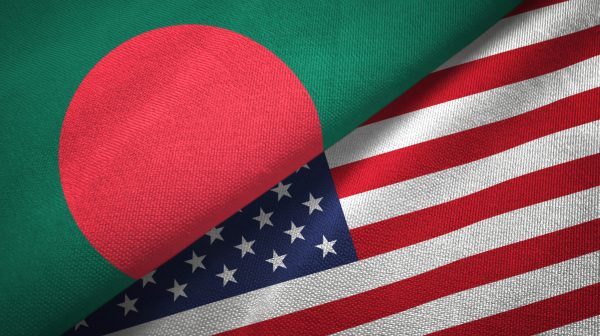The conflict between Russia and Ukraine started in 2014 after Russia annexed Crimea, a region previously part of Ukraine.
Tensions between the two countries escalated into a full-blown war in the Donbas region of eastern Ukraine, fighting was continuing between Ukrainian government forces and pro-Russian separatists.
The conflict has resulted in thousands of deaths and the displacement of over a million people. The international community has imposed economic sanctions on Russia and condemned its actions, but a resolution to the conflict has not been reached.
Resolving the conflicts between Ukraine and Russia is a complex and difficult issue that would require a comprehensive and sustained effort from both sides.
- Diplomatic negotiations: Diplomatic negotiations between the two countries, potentially with the involvement of international organizations such as the United Nations or the European Union, could be a key step in resolving the conflict.
- Political reforms: Reforms to the political systems and institutions in both Ukraine and Russia, aimed at increasing transparency, accountability, and the rule of law, could help reduce tensions and build trust between the two countries.
- Economic cooperation: Increasing economic cooperation between Ukraine and Russia, such as through trade and investment, could help to build trust and reduce tensions.
- Military de-escalation: Reducing military tensions and activities, such as through cease-fires, arms control agreements, and confidence-building measures, could help to create a more stable and secure environment.
- Addressing the root causes of the conflict: Addressing the underlying political, economic, and social issues that contribute to the conflict, such as corruption, poverty, and inequality, could help to prevent the conflict from re-emerging in the future.
While resolving the conflict between Ukraine and Russia will be a complex and difficult process, a combination of diplomatic negotiations, political reforms, economic cooperation, military de-escalation, and addressing the root causes of the conflict, could help to bring an end to the conflict and create a more stable and secure future for both countries.
What difference can tens of Leopard 2 and Abrams tanks make that the T72 already Ukraine can not do?
Leopard 2 and M1 Abrams tanks are considered to be some of the most advanced and capable tanks in the world, with a number of features that differentiate them from the T-72 tanks used by Ukraine.
- Armor: Leopard 2 and Abrams tanks have more advanced Armor protection, which is designed to provide better protection against modern anti-tank weapons.
- Firepower: The Leopard 2 and Abrams have more advanced main guns and fire control systems, allowing for improved accuracy and greater firepower.
- Mobility: Both tanks have advanced suspension systems and power trains, allowing for improved mobility on the battlefield.
- Technology: The Leopard 2 and Abrams tanks are equipped with more advanced technology, such as thermal imaging and laser rangefinding, making them more effective in a variety of combat scenarios.
While the T-72 are still a capable tank, the addition of Leopard 2 and Abrams tanks to Ukraine’s arsenal could provide a significant boost to their military capabilities and potentially help to level the playing field in the ongoing conflict with Russia.
Germany and the US are providing tanks to Ukraine as a show of support for the country and as a signal to Russia that the international community takes the ongoing conflict in the region seriously. The tanks are being provided as part of a larger military aid package aimed at improving the capabilities of the Ukrainian military and helping them to better defend themselves against Russian-backed separatists.
The delivery of the tanks is also intended to send a message to Russia that the international community is committed to supporting the territorial integrity of Ukraine and that further aggression will not be tolerated. Additionally, the provision of advanced military equipment like tanks is seen as a way to bolster the capabilities of the Ukrainian military and increase their ability to resist potential aggression from Russia.
Why doesn’t some country give Ukraine fighter jets so they can be more offensive in winning their war with Russia?
There are a number of reasons why countries have not provided Ukraine with fighter jets:
- Cost: Fighter jets are expensive to produce and maintain, and countries may not have the resources to provide them to Ukraine.
- Political considerations: Providing fighter jets to Ukraine could escalate the conflict with Russia and lead to further instability in the region, which some countries may be hesitant to support.
- Risk of escalation: The provision of fighter jets to Ukraine could be seen as a provocative act by Russia, potentially leading to an escalation in the conflict.
- International sanctions: Some countries may be restricted by the international sanctions imposed on Russia, which limit the types of military equipment that can be provided to Ukraine.
- The complexity of transfer: The transfer of fighter jets to Ukraine would require a significant amount of coordination and infrastructure, which may not be feasible for some countries.
These factors, many countries have opted to provide other forms of military support, such as training and equipment, rather than advanced military hardware like fighter jets. However, the situation is constantly evolving, and it is possible that the provision of fighter jets may be considered in the future if the conflict continues and the situation in the region deteriorates further.
The exact time it will take for the Leopard 2, Challenger 2, and Abrams tanks to reach Ukraine will depend on a number of factors, including the method of transportation, the distance between the countries, and any logistical or political obstacles that may arise.
If the tanks are being transported by sea, the journey could take several weeks, depending on the route and the conditions at sea. If they are transported by air, the journey could be completed more quickly, but may still take several days due to the size and weight of the tanks.
Additionally, there may be logistical and political obstacles to overcome before the tanks can be transported to Ukraine. For example, there may be restrictions on the export of military equipment, which would need to be addressed before the tanks can be transported.
Given these factors, it is difficult to estimate an exact timeline for when the tanks will reach Ukraine, but it is likely to take several weeks or more.
The number of troops that Ukraine can mobilize depends on a number of factors, including the current state of its military, its overall population, and the resources available to the government.
According to official Ukrainian government figures, as of 2021, the country has active military personnel of approximately 250,000. Additionally, Ukraine has a large pool of reserve personnel, numbering in the millions, that can be called upon in the event of an emergency or conflict.
However, the actual number of troops that can be mobilized in practice depends on a number of factors, such as the availability of equipment and resources, the readiness of the military, and the political will to do so. Additionally, the ongoing conflict in the Donbas region of Ukraine has put a significant strain on the military and may limit the number of troops that can be mobilized in the near term.
Overall, while Ukraine has a large pool of potential military personnel, the actual number of troops that can be mobilized will depend on a variety of factors and may be lower than the official figures suggest.
Why does Russia not destroy these tank deliveries to Ukraine before they ever reach the battlefield?
There could be several reasons why Russia has not yet taken military action to prevent the delivery of tanks to Ukraine:
- Diplomatic considerations: Russia may choose to avoid taking military action to prevent the delivery of tanks to Ukraine in order to avoid further international isolation and sanctions.
- Consequences: Taking military action against tank deliveries could escalate the conflict with Ukraine and lead to further consequences for Russia, both diplomatically and economically.
- International reaction: The international community may respond harshly to any military action by Russia against tank deliveries to Ukraine, potentially leading to further isolation and sanctions for the country.
- Military constraints: Destroying tank deliveries may require significant military resources and capabilities, and Russia may choose not to allocate these resources to this particular action.
- Strategic considerations: Russia may have calculated that the delivery of tanks to Ukraine will not significantly change the military balance in the region, and therefore may not be worth taking military action to prevent.
It is also possible that Russia has chosen to respond in other ways, such as diplomatic or economic pressure, rather than taking military action to prevent the delivery of tanks. Ultimately, the motivations behind Russia’s actions are complex and likely driven by a variety of factors, including strategic, political, and military considerations.





















Discussion about this post